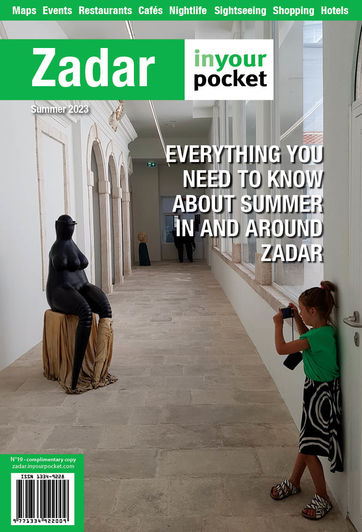Teatro Verdi
more than a year agoWe step back in time up until the end of the 19th century where Zadar was one of Croatia’s leading cities in terms of culture and music. However, when bombarded in WWII, 80 % of the city was destroyed with the ‘Teatro Verdi’ also suffering damage.
Although not severely damaged in the bombing by the Allies, it was soon completely destroyed after the Partisan Army arrived. Today, there is not a single sign or memorial plaque marking the existence of the two big theatre buildings which characterized the musical and theatre life of the city.
The capital of Dalmatia got its first true theatre in 1783 and it was named Teatro Nobile – The Noble Theatre, and contemporary Italian operas were staged there from its very beginnings.
In 1865, the second big theatre in Zadar was built – The New Theatre (later named Teatro Verdi) which was composed of three halls – a theatre, concert and dance hall and was considered to be the most beautiful in Dalmatia. During that period, all until the mid 19th century, its repertoire was based on Italian drama and music. It was luxuriously equipped and the finest craftsmen from Venice and Vienna worked on its interior design; it could seat an audience of 1500.
It was opened on October 7, 1865 with a performance of Verdi’s opera ‘Un ballo di maschera’, on the eve of the Feast Day of Saint Simon when the theatre season would traditionally start in Zadar. The new theatre was a reflection of wealth and political power. A lot of documents of the design and building of this theatre were saved. It was the biggest and most beautiful theatre on the east side of the Adriatic and was especially festive and decorated during the visit of Emperor Franz Joseph on May 10, 1875.
Various events, operas, ballets, comedies, dramas, masked dances, the first silent and sound films were held there and it was the centre of life in Zadar. Some of the great actors who performed there were: Alda Borelli, Ferruccio Benini, Eleonora Duse, Alessandro Drago, Ferruccio Garavaglia, Alfredo de Sanctis, Irma Gramatica, Giovanni Grasso,Angela Musso, Ermete Novelli, Giacinta Pezzana, Itala Vitaliani, Ermete Zacconi, and Emilio Zago.





Comments